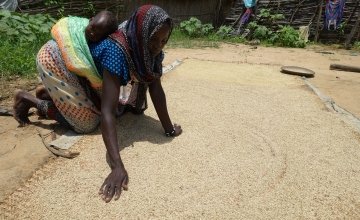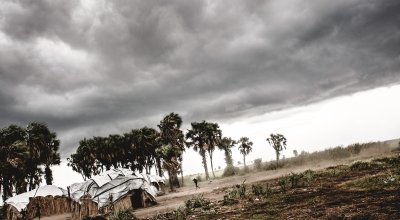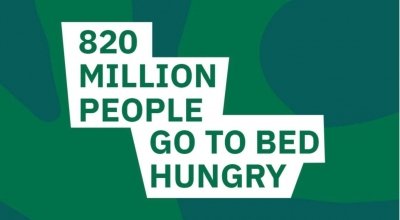
Knowledge Hub
Where are the world’s hungriest countries?

On October 15 2019, the Global Hunger Index (GHI) was published. The GHI ranks the world’s hungriest countries and provides reasoning behind the fundamental causes in order to assess progress and setbacks in combating hunger.
In 2019, the world’s hungriest country remains the Central African Republic, the case for several years. So where are the other hungriest countries in the world, and what are the main causes of these worrying levels of hunger?
The world’s hungriest countries
Below are listed the seven hungriest countries in the world, as ranked by the GHI. It is important to note here that the GHI is based on countries that have data available for all the GHI sub-indicators. There are countries we know have alarming levels of hunger but are not ranked in the GHI. These will be explored subsequently.
Measuring hunger in this way is complicated - the GHI captures hunger as a composite of absolute hunger, child malnutrition, and mortality. If you want to understand how the GHI calculates hunger levels, please download a copy of the report that lays out the processes clearly.
7. Haiti
The Caribbean island, Haiti, has one of the highest levels of food insecurity in the world. It is also the poorest country in the western hemisphere. Around 60% of the six million-strong population live below the poverty line.
Why?
Haiti suffers from regular natural disasters such as cyclones, hurricanes and flooding. The weather has a severe impact on food resources available to Haitians because it can destroy crops and land. Haiti's hunger and poverty levels are repeatedly exacerbated by cases of drought and hurricanes, the most recent of which was hurricane Matthew in 2016.
6. Liberia

Liberia is the sixth hungriest country in the world and suffers from a level of hunger that is serious. 51% of the population lives below the national poverty line. 35.5% of children under the age of five are stunted (too short for their age); 33% of females and 13% of males have never attended any school; and only 58.5% of people have access to protected wells, and instead rely on unprotected water sources.
Why?
Fourteen years of devastating civil war in Liberia ended in 2003, leaving infrastructure destroyed and the economy shattered. The country was only starting to recover when it was hit by Ebola in 2014, which further deteriorated their already weak health system. The needs are consequently enormous.
5. Zambia
Since 2000, Zambia’s GHI score has improved considerably, but it remains the fifth hungriest country in the world, with hunger levels categorised as alarming. 18% of the total population in Zambia do not have enough food, and 40% of children under five are stunted [UNICEF].
Why?
One of the fundamental reasons for Zambia’s hunger levels is that a strong drought is affecting central and western parts of the Southern Africa region, after having received very little rain during the 2018/19 rainfall season. At the same time, other parts of the country have been affected by flash floods and waterlogging, which has resulted in poor harvests. This type of weather pattern is inextricably linked to climate change.
4. Madagascar
Madagascar is the fourth hungriest country in the world, with hunger levels categorised as alarming. Affecting almost half of all children under five, malnutrition is one of Madagascar’s major health concerns [WFP].
Why?
Located in the Indian Ocean, approximately 400 kilometres off the coast of East Africa, Madagascar is plagued by political and economic unrest and high levels of poverty. Madagascar is also among the ten countries most vulnerable to natural disasters. A quarter of the population lives in areas highly prone to cyclones, floods or drought, and climate change and environmental degradation exacerbate these risks [WFP]. This has a huge effect on crop production in a heavily rain-fed agriculture-reliant country.
3. Chad

Chad is the third hungriest country in the world. It has a child mortality rate of 12.3 percent and its hunger levels are classed as alarming.
Why?
Chad was ranked 186 of 189 countries in the 2017 Human Development Index. It continues to struggle with significant development needs and vulnerability to natural and human-made crises. Poverty remains a considerable challenge and is especially prevalent in rural areas.
In recent years Chad has also experienced an influx of refugees, mainly from South Sudan, the Central African Republic, and Nigeria. By the end of 2018 the number of refugees exceeded 450,000, with more arriving in 2019. This puts a huge strain on already limited resources.
2. Yemen
According to the GHI, Yemen is the world’s second hungriest country, with hunger levels that fall into the alarming category.
Why?
The country has been affected by civil war since 2014, although there are in fact multiple conflicts occurring whose roots go as far back as the 1990s (Ahram 2019).
Out of a population of 28 million, it is estimated that 17 million people in Yemen will face severe food shortages through early 2020, with some areas of the country facing emergency-level food crises. According to the GHI, if the security situation deteriorates, the country is at risk of famine.
1. The Central African Republic
The Central African Republic has the highest 2019 GHI score, making it the world’s hungriest country according to this calculation. CAR is the only country that has ‘extremely alarming’ levels of hunger of the countries with sufficient data for calculating their GHI scores. Nearly half of all children in the Central African Republic are stunted, and 60 percent of the population is undernourished.
Why?
Since 2012, conflict has severely affected over half the population and over a million people have been forced from their homes, devastating people’s livelihoods and access to food. This has caused a crisis of hunger and undernutrition. As of June 2019, 605,000 refugees had left the country and an additional 655,000 people were internally displaced out of a population of just 4.7 million (UNHCR; UN DESA). More than half of the population is in need of humanitarian assistance in 2019.
The above countries show how conflict and climate change exacerbate hunger and extreme poverty.
What are we doing about it?
Concern works in four of the seven hungriest countries in the world: the Central African Republic , Chad, Liberia and Haiti. In these countries, we do a variety of programmes spanning from implementing health and nutrition programmes to delivering life-saving assistance and building communities’ resistance to potential disasters, including the effects of climate change.
However, some of the countries we work in have some of the worst levels of hunger but are not listed in the GHI. This is because researchers are not able to get enough data to calculate hunger levels. In some cases, data is unavailable as a result of violent conflict or political unrest. According to the GHI, these contexts are “causal factors and strong predictors of hunger and undernutrition, so the countries with missing data may be the ones with citizens in the greatest distress due to hunger.”
Here is a list of countries that has missing data but cause for significant concern with regards to their levels of hunger:
- Burundi
- Comoros
- Democratic Republic of Congo
- Eritrea
- Libya
- Papua New Guinea
- Somalia
- South Sudan
- Syrian Arab Republic
Out of these nine countries, we operate in five: Burundi, DRC, Somalia, South Sudan and Syria, and we will continue in our mission to end extreme poverty and hunger, whatever it takes.
Download the Global Hunger Index
Other ways to help
Donate now
Give a one-off, or a monthly, donation today.
Join an event
From mountain trekking to marathon running, join us for one of our many exciting outdoor events!
Buy a gift
With an extensive range of alternative gifts, we have something to suit everybody.
Leave a gift in your will
Leave the world a better place with a life-changing legacy.
Become a corporate supporter
We partner with a range of organisations that share our passion and the results have been fantastic.
Create your own fundraising event
Raise money for Concern by organising your own charity fundraising event.





